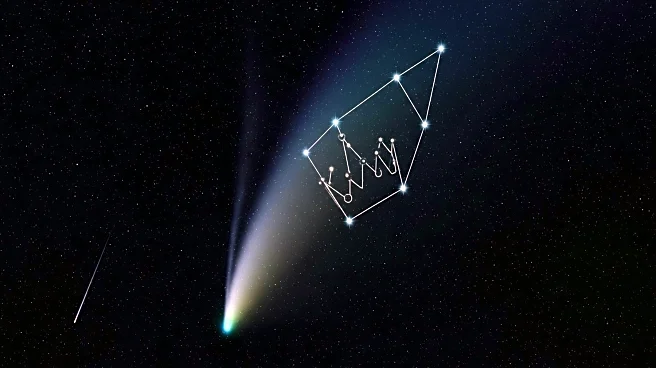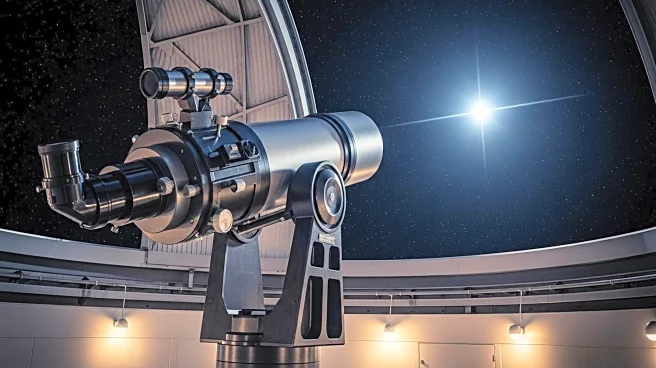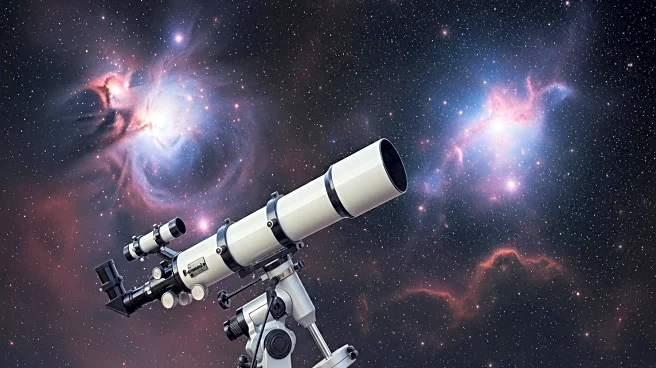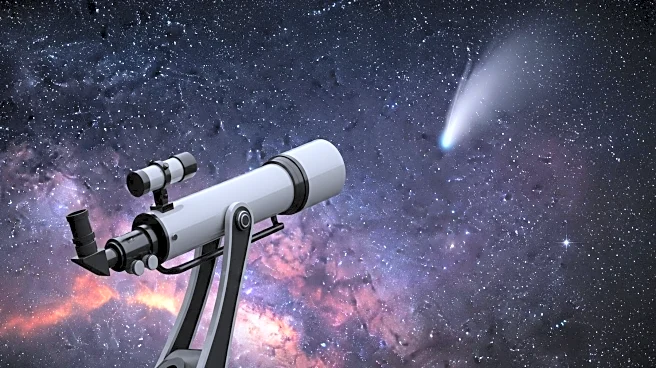What's Happening?
Isaac Roberts, a builder and amateur astronomer from Denbigh, made history by capturing the first clear photograph of the Andromeda Galaxy in 1888. His innovative use of a clockwork mechanism allowed his telescope to track the night sky accurately, enabling long-exposure photography that revealed the galaxy's spiral structure. Roberts' work laid the foundation for modern astrophotography, combining his skills in construction with a passion for astronomy. His contributions were recognized with awards and a scholarship fund, and his legacy continues to influence astronomical research today.
Why It's Important?
Roberts' pioneering work in astrophotography marked a significant advancement in the field of astronomy. By capturing detailed images of celestial objects, he provided a new way to study and understand the universe. His techniques allowed astronomers to observe and document phenomena that were previously invisible to the naked eye, paving the way for future discoveries. The ability to photograph galaxies and other distant objects has become a crucial tool in modern astronomy, enabling scientists to explore the cosmos and uncover its mysteries.
Beyond the Headlines
Roberts' story highlights the intersection of science and technology in the late 19th century. His work exemplifies how innovation and creativity can drive scientific progress, even outside traditional academic settings. The collaboration between Roberts and other astronomers of his time demonstrates the importance of sharing knowledge and expertise across disciplines. His legacy serves as an inspiration for amateur scientists and underscores the value of curiosity and perseverance in the pursuit of knowledge.










